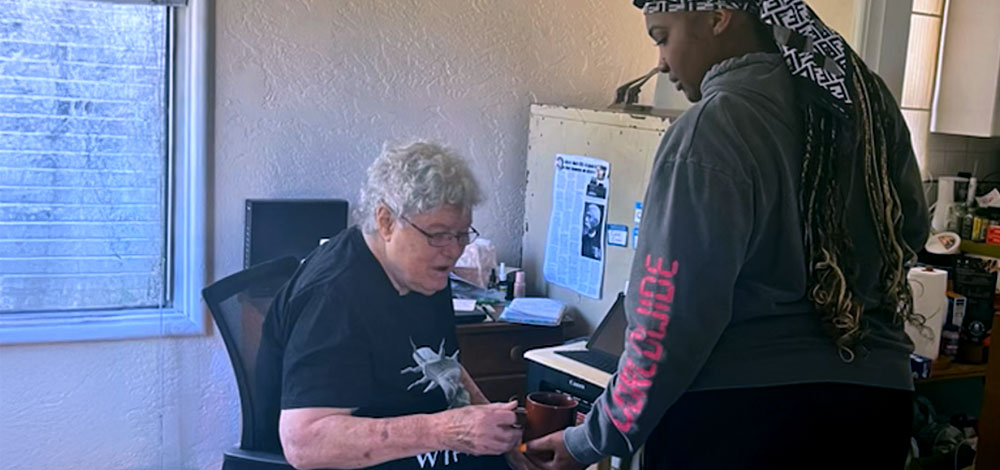View the Report
Jump to All Downloads & LinksSummary

Despite evidence of the benefits of community-based palliative care (CBPC) and data indicating that our current capacity is insufficient to meet the need, growth of these services has likely been slowed by the lack of adequate, defined funding streams. To address these challenges, from 2014 to 2017, CHCF supported a planning and implementation process for six teams of payer and provider organizations committed to strengthening and spreading CBPC services in California. Participating providers included large academic medical centers, hospices, and a specialty palliative care practice, while the payers included national insurers, regional insurers, and a Medicaid managed care plan.
Payer-provider teams participated in a six-month planning process during which they developed operational and financial plans for delivering palliative care services in community settings (clinics, patient homes, and tele-visits), followed by a 24-month implementation phase where contracts were executed and services were launched. This kind of collaboration between payers and providers is an emerging trend in CPBC, and our grantees were among the first to participate in such efforts.
Growth of community-based palliative care services has likely been slowed by the lack of adequate, defined funding streams.
This series, Lessons Learned from Payer-Provider Partnerships for Community-Based Palliative Care, explores lessons about the process of developing and enacting agreements to deliver CBPC:
Explore each lesson below. Download the full report, or read the Quick Tips sheet for a brief overview.
Initial Engagement
As a first step in building a successful partnership, payers and providers should take the time upfront to communicate openly and share information about organizational characteristics, goals, and priorities.
- Invest in the beginning
- Be open about goals, pressures, and priorities
- Discuss resources, expectations, and past experiences
- Expect complexity and to revisit plans over time
Read more in Payer-Provider Partnerships, Lesson One: Initial Engagement.
Defining the Eligible Population
The clinical, operational, and social criteria used to define the target population will influence the number of potentially eligible patients, the number that are referred, and the types of supports that need to be delivered.
- Be intentional in defining the target population
- Understand the needs of the target population
- Appreciate how eligibility will be assessed and by whom
- Anticipate how eligibility criteria will impact volume, costs, and outcomes
Read more in Payer-Provider Partnerships, Lesson Two: Defining the Eligible Population.
Promoting Appropriate Referrals
Both payer and provider share responsibility for getting the right patients to the service.
- Use all your assets — data resources and human resources
- Plans and palliative care providers should engage with referring providers
- Expect significant time investment
- Initial referral volume may be low and may increase slowly
Read more in Payer-Provider Partnerships, Lesson Three: Promoting Appropriate Referrals.
Service Design and Operational Issues
The clinical model and operational processes adopted by the partnership will impact care quality, patient and family satisfaction, care team satisfaction, and costs, so thoughtful attention to detail is essential.
- Align care model, patient needs, and desired outcomes
- Specify expectations and boundaries
- Consider approaches to increase efficiency
- Look for and address operational challenges
Read more in Payer-Provider Partnerships, Lesson Four: Service Design and Operational Issues.
Payment Issues
Determining the right payment mechanisms and amounts requires that both payer and provider have a solid understanding of care delivery costs.
- Understand costs and cost drivers
- Anticipate negotiation and renegotiation
- Consider layering payment mechanisms
- Financial negotiations can be difficult
Read more in Payer-Provider Partnerships, Lesson Five: Payment Issues.
Metrics and Assessing Impact
The right metrics are the ones that are feasible to implement and that meet the information needs of both the plan and the provider organization.
- There is no standard set of metrics for community-based palliative care
- The right metrics are the ones that work for both parties
- Consider data access and collection burden
- Plans and providers can share the burden
Read more in Payer-Provider Partnerships, Lesson Six: Metrics and Assessing Impact.
Monitoring and Modifications
Achieving and sustaining balance across three critical areas — provider effort/cost of care delivery, payment amount, and desired outcomes — requires ongoing attention to program functioning and a willingness to revisit multiple aspects of program design and operations.
- Successful contracts have balance across effort, payment, and outcomes
- Set yourself up to recognize and address imbalances
- Expect changes when transitioning from pilot to sustained program
- Not every pilot will be sustained
Read more in Payer-Provider Partnerships, Lesson Seven: Monitoring and Modifications.
Relationship Issues
Creating a mutually beneficial contract can be really hard. A good payer-provider relationship makes it a lot easier.
- Empathy, transparency, and collaborative problem-solving are valued highly
- Recognize that things won’t necessarily go as expected
- Organizational culture influences relationships
- It takes time to build relationships
Read more in Payer-Provider Partnerships, Lesson Eight: Relationship Issues.
Authors & Contributors

Kathleen Kerr
Kathleen Kerr is a partner in the consulting firm Transforming Care Partners. Her work is focused on promoting the development of sustainable, high-quality palliative care programs, with particular emphasis on payer-provider partnerships and supporting programs that serve Medicaid enrollees.





